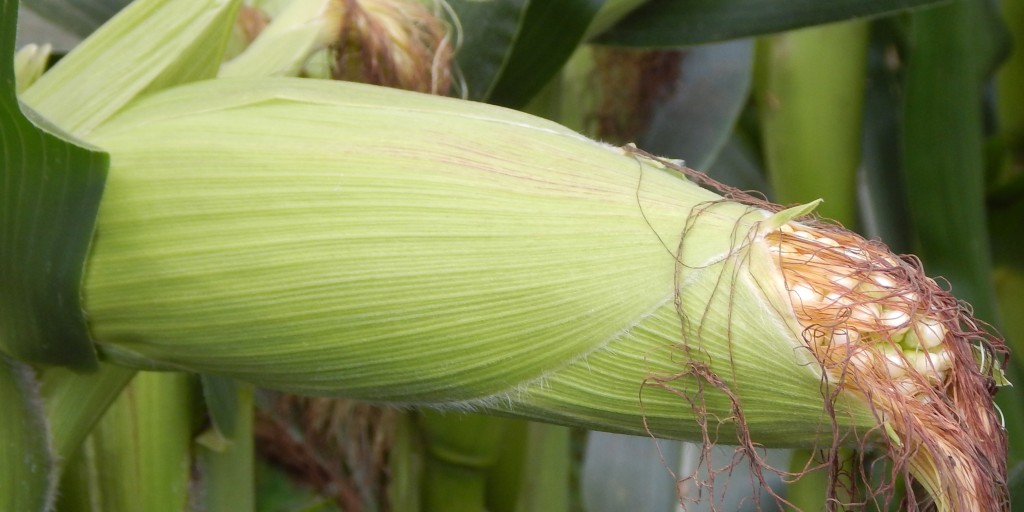
[364] Zea mays, Maize
Introduction
Zea Mays, Maize (or Corn in the USA), is a cereal crop, very widely cultivated for its spectacular fruits.
As noted earlier, in Britain the word corn is used for [345] Triticum aestivum, wheat, and for other cereal crops such as [177] Barley, rye or oats. In a cuisinary context in Britain we may call the fruit of Zea mays corn or sweetcorn – or corn-on-the-cob. As for everything, US usage is spreading into British culture.
It takes the prize in my blog for the shortest scientific name but doesn’t even make the top ten for shortest common names. [With some uncertainty, it is arguably beaten by [295] Frog and Toad, [098] Crow, [099] Rook, [152] Coot, [261] Reed, [159] Jay, [170] Ivy, [340] Yew,[144] Cat, [066] Dog, [328] Pig, [297] Rat, [362] Fox and perhaps [054] Cow.]
There may be a genus of butterflies in the family Hesperiidae called Zea but all the references I can find are from Wikipedia where I think it could be a mistake for Zela.
Taxonomy
Kingdom – Plants
Division – Vascular Plants
Class – Angiosperms (Flowering Plants)
Clade – Monocots
Clade – Commelinids
Order – Poales
Family – Poaceae
Subfamily – Panicoideae
Supertribe – Andropogonodae
Tribe – Andropogoneae (Sorghum, Sugarcane, Maize and others)
Subtribe – Tripsacinae
Genus – Zea
Scientific Name – Zea mays
Zea has the synonym Euchlaena
Many cultivars are available.
Name
Maize comes from Spanish maiz, from a native American name for the plant.
Wikipedia points out that ‘corn’ generally means any cereal crop especially the local one. In America, Maize was at one time called ‘Indian Corn,’ which has been shortened to corn. Corn is an Old English word from Germanic roots, originally meaning corn grains.
Zea Latinized from Ancient Greek zeia, is the name of a cereal grain, possibly Triticum spelta, spelt. The species epithet with its rather unusual spelling is probably a noun in apposition.
Description
We know about grasses in general and cereal crops and have seen Wheat recently.
Maize may not be the largest of our types of grass but its flowers and fruits are the most impressive.
The origins of Zea mays are lost in prehistory but it is presumed to have come from other species of Zea, all of which are called Teosinte. Teosinte comes via French and Spanish from the Classical Nahuatl (Aztec) language.
Maize is very different to Teosinte, which is short and bushy with fruit not much larger than wheat. Maize is a robust, tall plant producing a single stem.
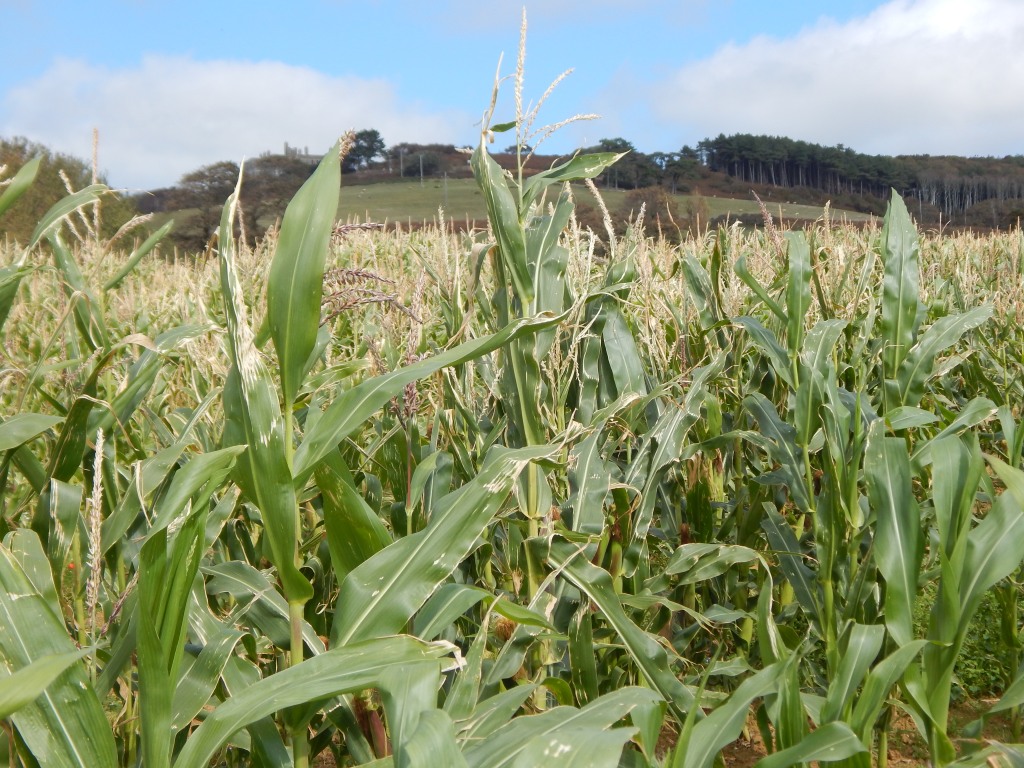
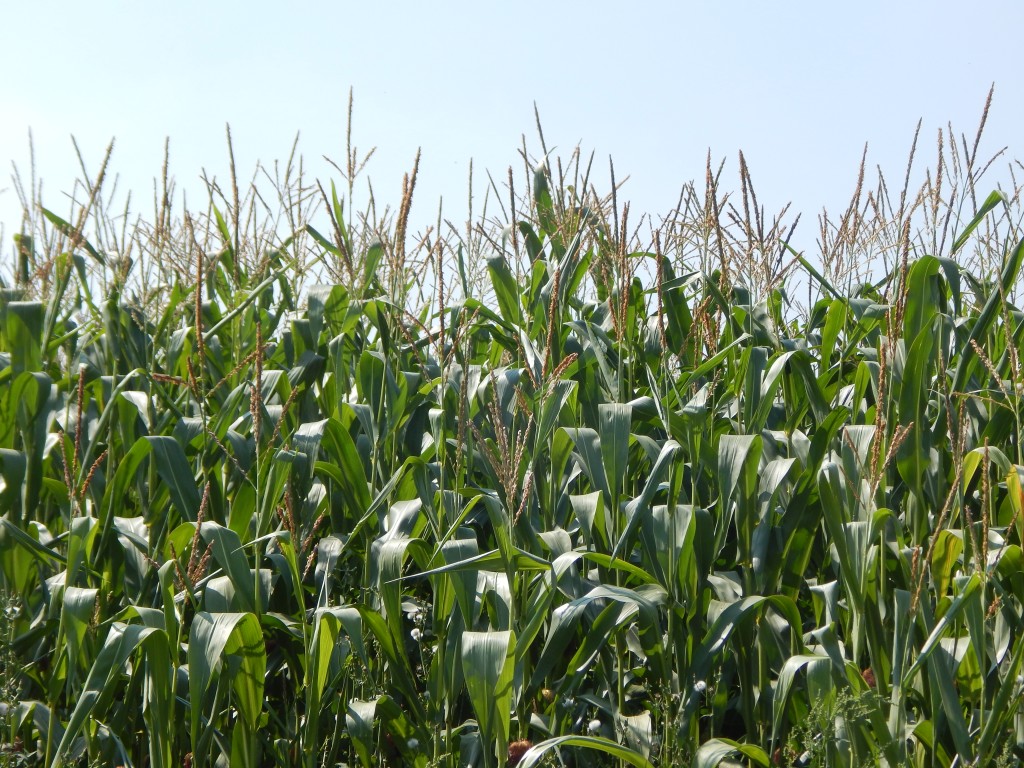



There are many different ways in which flowers manage sexual reproduction. Each flower can be male, female or hermaphrodite and each plant can produce any combination of the three types – either at the same time or consecutively – sometimes changing every year or between seasons.
Zea mays is a good example of a monoecious plant. In general, each plant produces male flowers at the top of its stalk and one or more female flowers about half way up. The female flowers eventually become the familiar corn cobs.


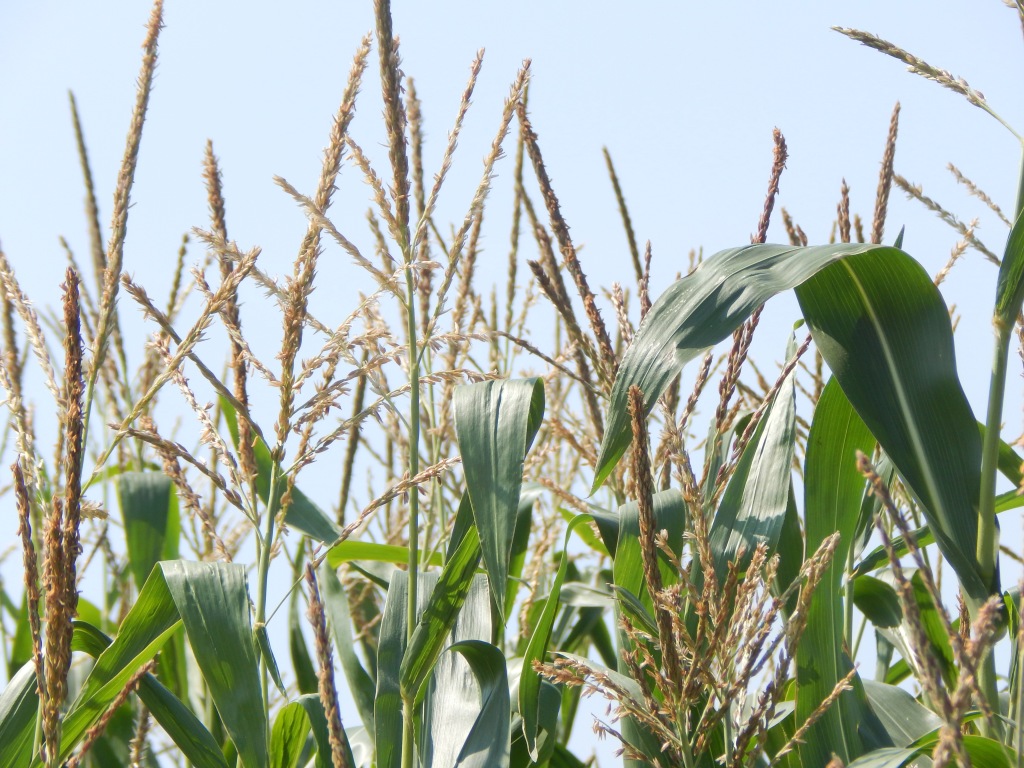
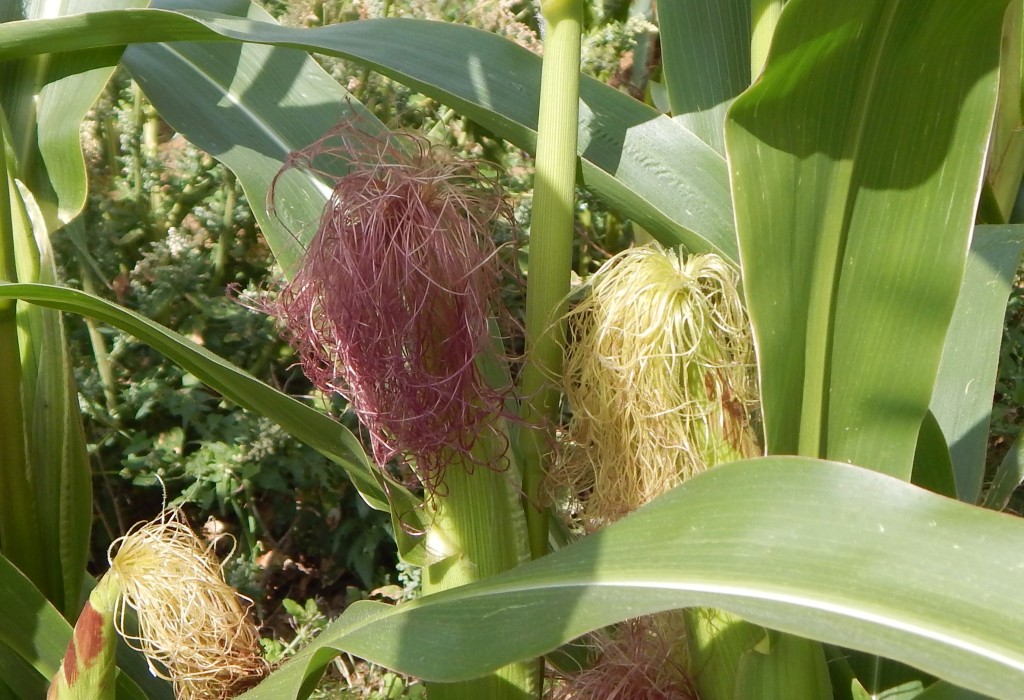
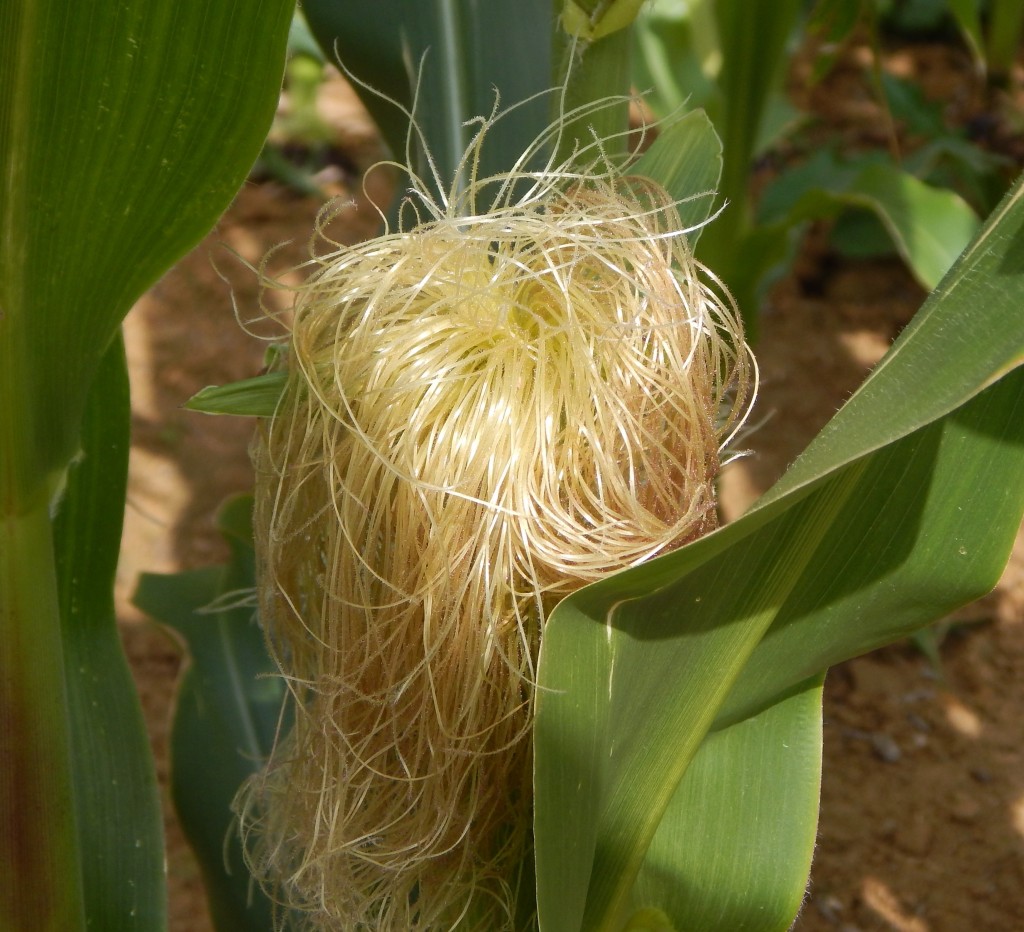

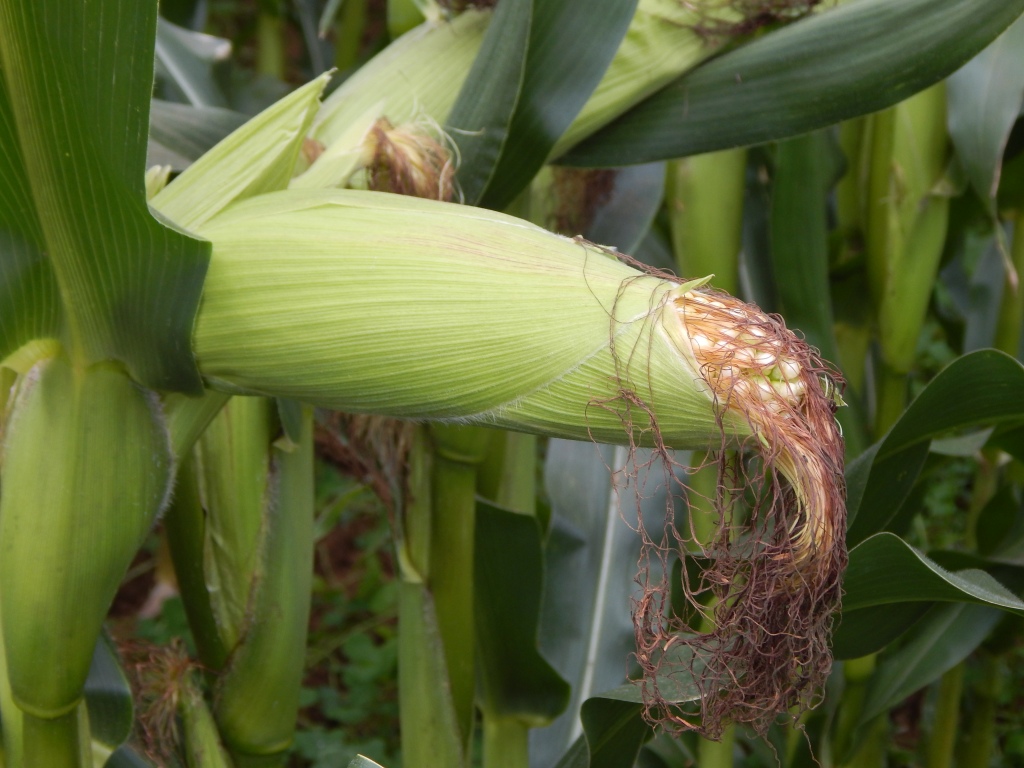
Habitat and use
Maize was first cultivated by the indigenous people of southern Mexico about 10 000 years ago. It spread back to Europe and elsewhere when the Spaniards arrived about 1500. Its worldwide production is now more than any other grain. Originally maize just produce a single very small corn cob but intensive cultivation has changed it to what it is today.
Sugar-rich varieties are called sweet corn but it also as an animal foodstuff or to produce corn meal, corn oil, corn flakes, popcorn and many other products.
The USA is the largest producer and almost all of American maize is genetically modified. Only about 2% of Maize produced in the USA is for human consumption. Most of it is fed to animals, directly or indirectly, or used to produce alcohol.
Other Notes
Although widely grown worldwide, Maize is an insignificant product in UK agriculture. I was able to find enough for my pictures. It is available in a number of cultivars for use in gardens and allotments. Some varieties grown as ornamental plants produce multicoloured seed pods.
See also
It’s a bit late to be telling you what to look for. This is our last crop, our last grass species and our last plant of any type.
